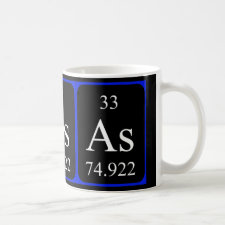
Authors: Kisomi AS, Alizadeh T, Shakeri A, Nouri A, Farsadrooh M, Najafi AsliPashaki S
Article Title: Application of μ-TLC for speciation of inorganic arsenic by laser ablation inductively coupled plasma mass spectrometry.
Publication date: 2020
Journal: Microchemical Journal
Volume: 159
Article Number: 105443.
DOI: 10.1016/j.microc.2020.105443
Alternative URL: https://www.sciencedirect.com/science/article/pii/S0026265X20315629
Abstract: A novel μ-Thin layer Chromatography coupled with Laser Ablation Inductively coupled Plasma Mass Spectrometry method based on Ion Imprinted Polymer (IIP) is developed for the first time in this paper which tries to investigate the separation of inorganic arsenic species in aqueous media. Surface morphology, functionality, and bulk composition of the as-synthesized copolymer were confirmed utilizing multiple techniques, such as XRD, FESEM, and FT-IR. IIP-Copolymer was combined with CaSO4, as a binder agent, that was used to prepare a thin layer chromatography plate. Subsequently, inorganic arsenic species were separated over the TLC plate based on As(V)-imprinted polymer. In the following, the plate surface was scanned via laser ablation which volatilized the inorganic arsenic species from the TLC plate and then introduced them to the ICP-MS system. The effect of some experimental conditions including pH, mobile phase composition, and IIP/CaSO4 mass ratio on the separation efficiency were also investigated. Moreover, the obtained results for the spiked inorganic arsenic species in real samples, such as Angouran, Nakhlak, and Zarshouran proved that the methods were practically applicable to speciation analysis. Under the established optimal condition, the detection limit, Relative Standard Deviation (RSD) of responses, and linear dynamic range (LDR) of the method were obtained as 0.3 μg L-1, 3.8%, and 0.2-100 μg L-1 for As(V) assay. The IIP-μTLC/LA-ICP-MS has also illustrated great application perspectives for rapid and high-effective selection, characterization, and separation of ultra-trace inorganic arsenic species in environmental water samples
Template and target information: arsenic, As(V)
Author keywords: ion imprinted polymer, ICP-MS, Inorganic arsenic species, Laser ablation, Speciation, thin layer chromatography



Join the Society for Molecular Imprinting

New items RSS feed
Sign-up for e-mail updates:
Choose between receiving an occasional newsletter or more frequent e-mail alerts.
Click here to go to the sign-up page.
Is your name elemental or peptidic? Enter your name and find out by clicking either of the buttons below!
Other products you may like:
 MIPdatabase
MIPdatabase









